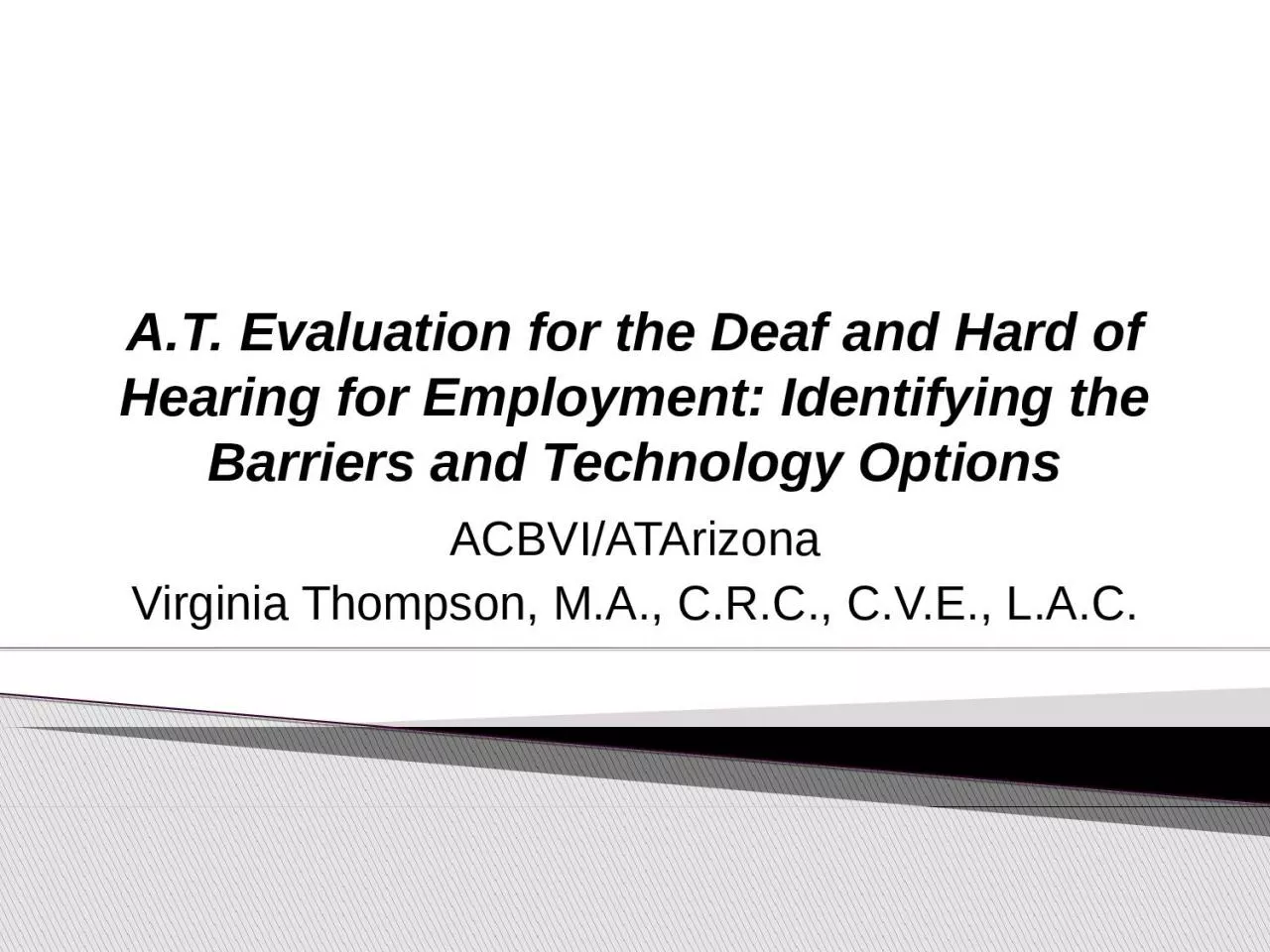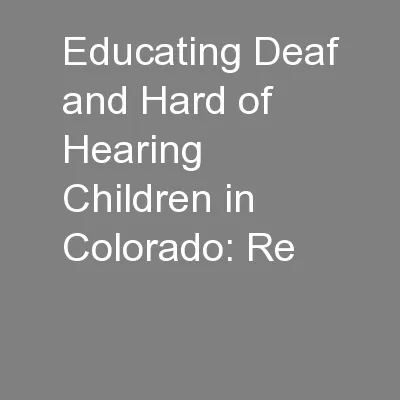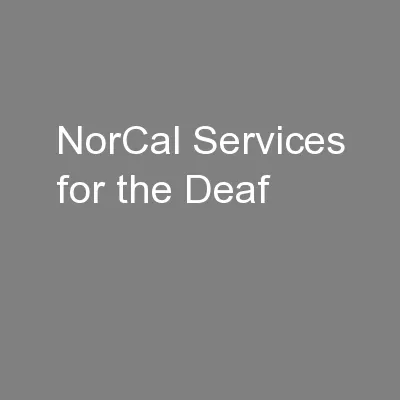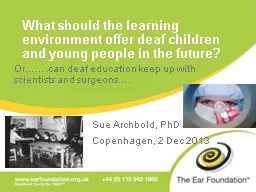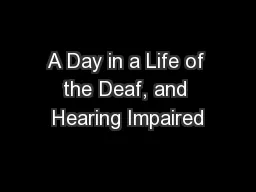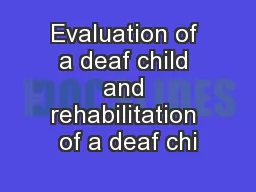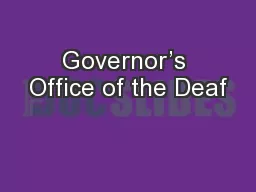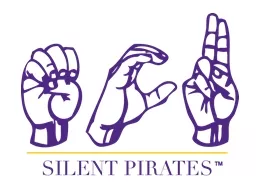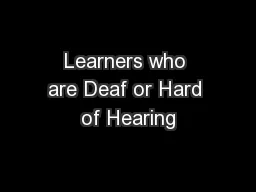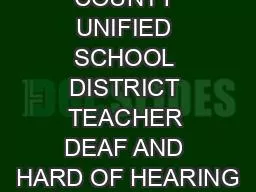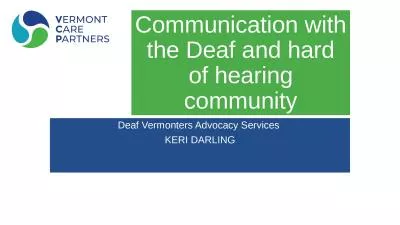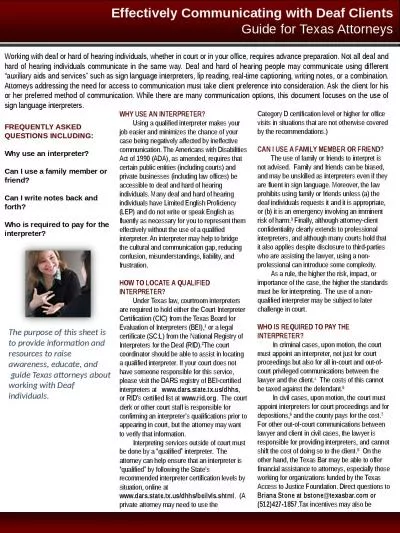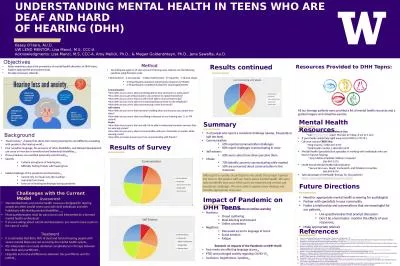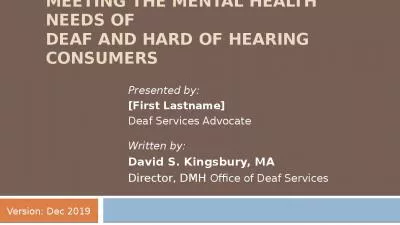PPT-A.T. Evaluation for the Deaf and Hard of Hearing for Employment: Identifying the Barriers
Author : CutiePie | Published Date : 2022-08-01
ACBVIATArizona Virginia Thompson MA CRC CVE LAC The use of the cultural label of being Deaf can be a declaration of personal identity rather than an indicator
Presentation Embed Code
Download Presentation
Download Presentation The PPT/PDF document "A.T. Evaluation for the Deaf and Hard of..." is the property of its rightful owner. Permission is granted to download and print the materials on this website for personal, non-commercial use only, and to display it on your personal computer provided you do not modify the materials and that you retain all copyright notices contained in the materials. By downloading content from our website, you accept the terms of this agreement.
A.T. Evaluation for the Deaf and Hard of Hearing for Employment: Identifying the Barriers: Transcript
Download Rules Of Document
"A.T. Evaluation for the Deaf and Hard of Hearing for Employment: Identifying the Barriers"The content belongs to its owner. You may download and print it for personal use, without modification, and keep all copyright notices. By downloading, you agree to these terms.
Related Documents

